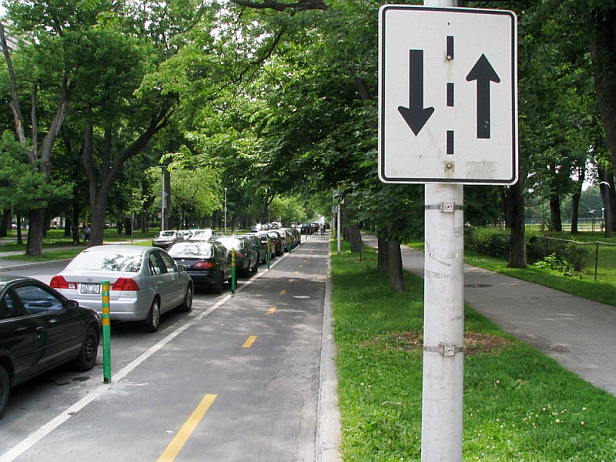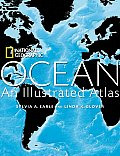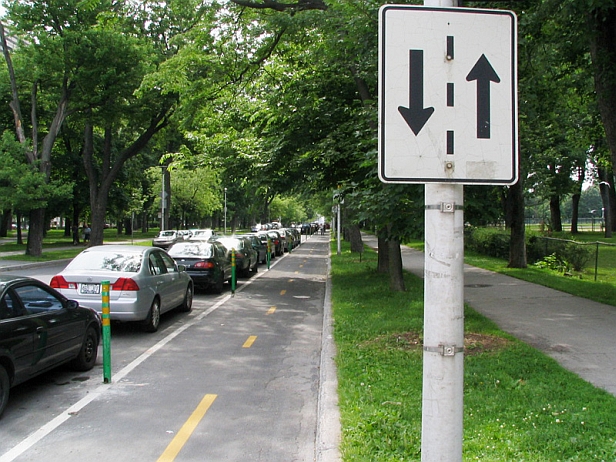Well this is a bummer: A Belgian study finds that bicyclists on urban streets inhale tens of millions of toxic nanoparticles with each breath, taking in five times as much as drivers and pedestrians on the same streets.
The U.K. Times reports on the new research:
Because they are exerting themselves, cyclists breathe harder and faster than other road users. The study found that they suck in about 1,000 cubic cm with each breath, meaning they may inhale tens of millions of the particles each time they fill their lungs, and billions during a whole journey.
“This is the first time anyone has counted the particles while also measuring people’s breathing during city commuting. It showed that cyclists can inhale an astonishing number of pollutant particles in one journey,” said Luc Int Panis of the transport research institute at Hasselt University in Belgium, who led the study.
Researchers fitted bikers with devices that counted the particles — mostly emitted by car tailpipes — in the air they breathed. Research on the long-term effects of inhaling these particles is murky, though they’ve been linked to heart disease and respiratory problems. “Other studies have shown that exposure to particulate pollution can have rapid short-term effects too — such as provoking asthma attacks,” says the Times.
As an occasional bike commuter, my expert opinion is that this news blows. Biking (along with walking) is the most helpful commuting method for the planet and for fellow citizens, so I’d like it to have even more benefits for bikers themselves. Int Panis’ study complicates the picture, although it doesn’t really change the long-term solutions — fewer internal-combustion vehicles, more electric vehicles, much more mass transit, land use that reduces the need for daily travel, and streets that are safe for bikers and walkers as well as autos.
In the short term, nanoparticles are so small that wearing a mask doesn’t help (which is a relief in its own way — who wants to wear a mask?). The research instead suggests finding ways to separate bikes from cars and trucks. Cyclists can choose routes away from arterials and heavily trafficked streets. Diesel fumes are especially important to avoid: on an equal horsepower basis, diesel exhaust is 100 times more toxic than exhaust from automobiles, according to Robert W. Derlet of UC-Davis.
Avoiding traffic gets tough, though, when you’re trying to go where everyone else is trying to go (say, downtown) at the same time (say, rush hour). And for the public-health and environmental benefits of biking to be fully realized, it’s got to be more than weekend recreation. Sticking to bike paths and country roads doesn’t get most people where they need to be in their daily lives.
 Parked cars separate this Montreal cycletrack from cars — and, researchers hope, from their tailpipe fumes.Joel Mann via Flickr.Planners can help by creating cycle tracks that give bikers a buffer of trees, sidewalks, or parked cars so that they’re not breathing directly behind auto tailpipes. (Seattle just announced plans for its first cycle track.) But does a few feet of separation do any good? Anne Lusk, a cycling advocate and research fellow at the Harvard School of Public Health, is applying for funding to study just that, since there’s no definitive research on whether cycle tracks help bikers avoid significant levels of road pollution, she said. A 2005 study of busy central London streets found that air on sidewalks was cleaner than in the road, suggesting a small separation makes a difference.
Parked cars separate this Montreal cycletrack from cars — and, researchers hope, from their tailpipe fumes.Joel Mann via Flickr.Planners can help by creating cycle tracks that give bikers a buffer of trees, sidewalks, or parked cars so that they’re not breathing directly behind auto tailpipes. (Seattle just announced plans for its first cycle track.) But does a few feet of separation do any good? Anne Lusk, a cycling advocate and research fellow at the Harvard School of Public Health, is applying for funding to study just that, since there’s no definitive research on whether cycle tracks help bikers avoid significant levels of road pollution, she said. A 2005 study of busy central London streets found that air on sidewalks was cleaner than in the road, suggesting a small separation makes a difference.
“What you clearly should do as a bicyclist is to avoid busy arterial roads,” said Lusk.
Compared to drivers, she said, cyclists have shorter commutes and use fewer busy roadways (you don’t see many of them on interstates), which limits their exposure to tailpipe pollution.
Lusk said Int Panis’ nanoparticle research is sound and accurate, but that bikers still get a net health benefit, given the exercise their hearts, lungs, and muscles are getting. “Bikers are still coming out ahead,” she said.
Making biking safer and more commonplace will only make that more true.



